
It’s summertime in Portugal. The sky high above is clear and cloudless, and even though you’ve just gotten off the water, the sunshine is already warming you up. You look down and see a nice tan on your arms. Then, your belly begins to rumble. You look at your watch: it’s not quite dinnertime yet, but you’re undeniably hungry. You begin to browse around on your phone to see what options are around you. You choose a restaurant or a café, and off you go...
You reach your chosen location, and you see, right there on the pavement, on a chalkboard sign. It’s written in English: “The Best Portuguese Tapas!” But something goes off in your mind, and you remember the most important: there are no such things as Portuguese tapas... But there are Portuguese petiscos! However, if you want to call them tapas, go ahead by all means. The Portuguese won’t really care.
What are Portuguese Petiscos?
In short, petiscos are snacks, appetizers, a Portuguese version of tapas, something you can easily fill your belly with, as the Portuguese like to say, “to cheat hunger” before you settle down for lunch or for dinner. Portuguese cuisine is so rich, so varied, drawing in so many inspirations, using fresh ingredients and sauces, that no matter your dietary options or preferences, there’s petiscos that will leave you satisfied. TasteAtlas, a world-renowned publication, ranks the Portuguese cuisine as the 4th best in the world, and Portuguese petiscos, while not at the forefront, definitely contribute to Portugal’s high positioning.
The Best Portuguese Petiscos
Tremoços
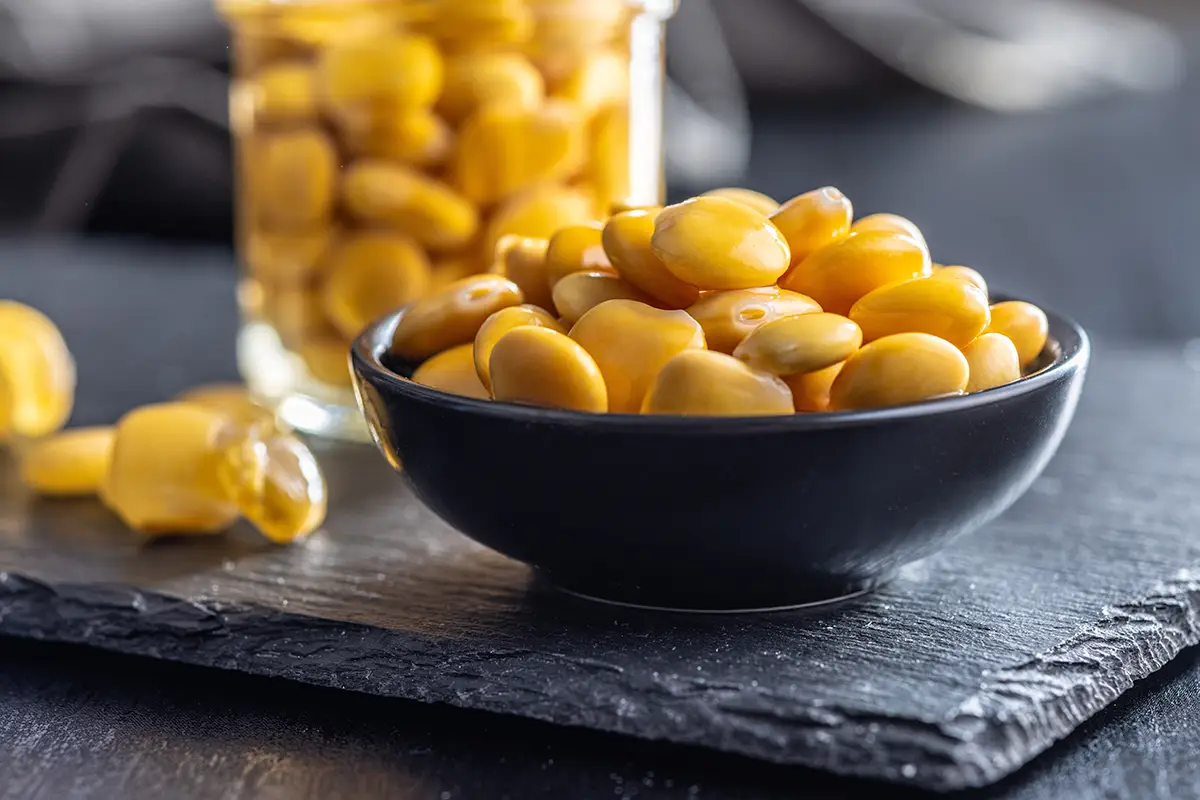
Tremoços are the quintessential Portuguese petisco, something to nibble on while drinking a beer, especially after the end of a long, sunny day. Tremoços are a typical summer petisco, but they can easily be had during the winter as well. To properly eat a tremoço, you must first remove the skin with your teeth, and pull out the legume seed from within, and only then chew on it. Tremoços are a low-calorie, high-protein food, so feel free to have as many as you like! Depending on the establishment, tremoços may be given complementarily after you have drunk a few beers, while others may charge you for them.
Pica-Pau
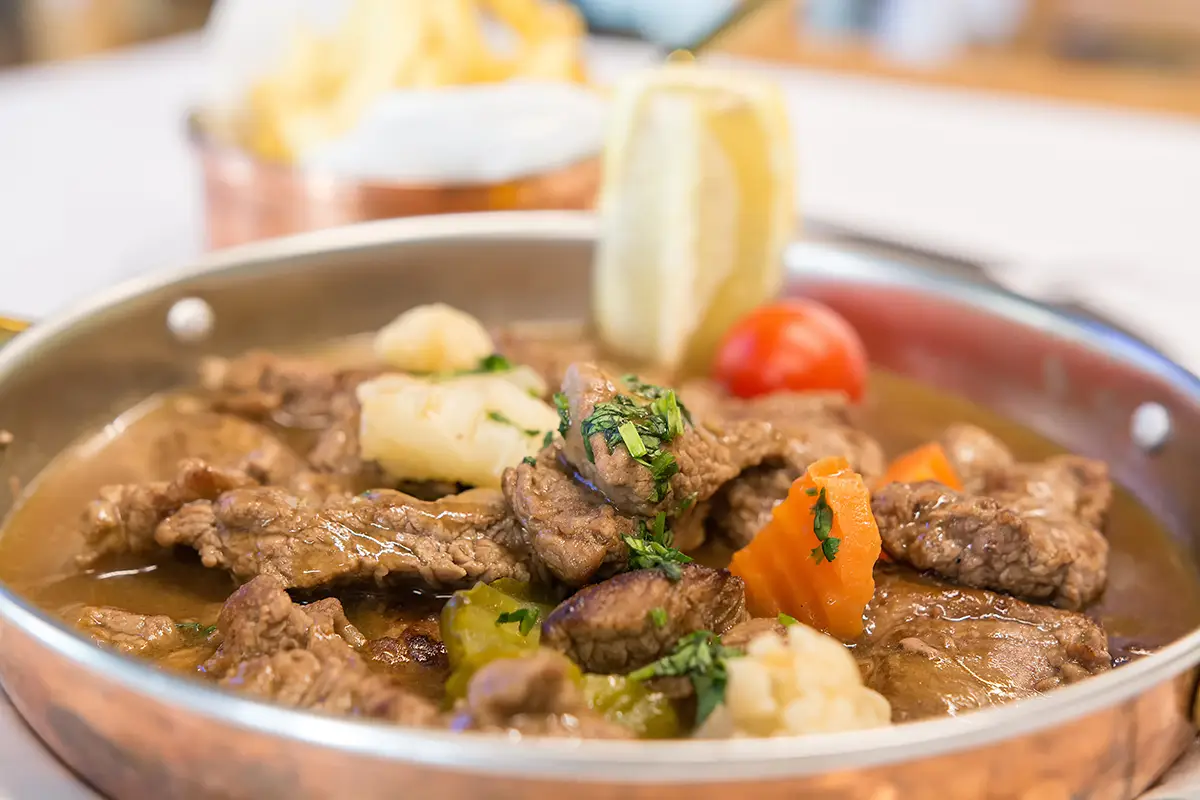
Usually served alongside bread and beer, pica-pau is a pork or chicken petisco, and an extremely popular choice among the Portuguese. The most delicious part about this particular Portuguese tapa is the sauce, made from a dash of white wine, bits of garlic, bay leaves, with some butter, olive oil, salt and pepper thrown in. Pickles and olive oils are added into the sauce to further enhance its flavour and serve as a nice palate breaker. Be careful when munching on this appetizing Portuguese tapa, or you might not have enough room left in the stomach for dinner!
Caracóis
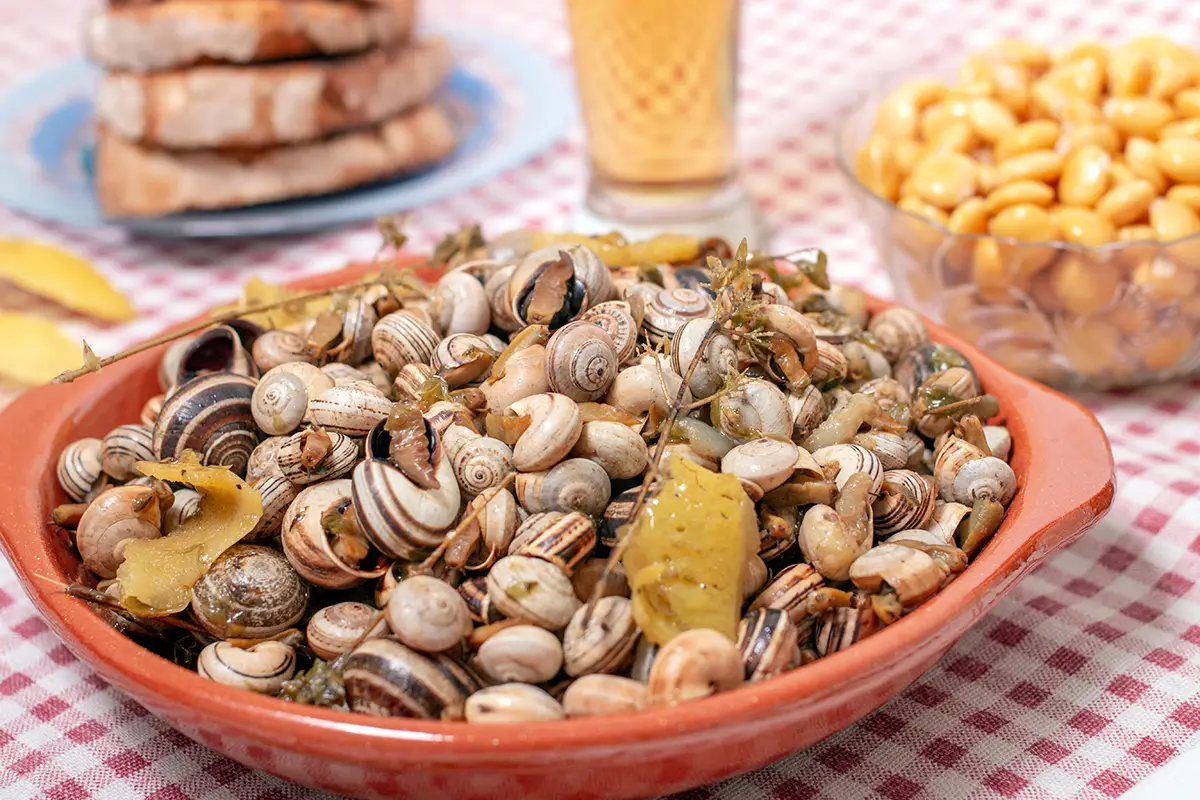
You’re unlikely to find this petisco served anywhere else other than the summer months, and probably only in the more southern areas of Portugal. There’s even a saying about caracóis in particular, that it is served only in the months without the letter “r” in Portuguese – which are May, June, July, and August – coincidentally the same as in English. Eating caracóis, or snails, is not for everyone, but you won’t find any shortage of establishments offering them. The Portuguese way of cooking caracóis involves mixing in olive oil, garlic, onion in a pot full of water, and boiling the petisco until it’s ready to serve. Afterward, caracóis tend to taste more from the derived sauce rather than the meat itself.
Pastéis de Bacalhau
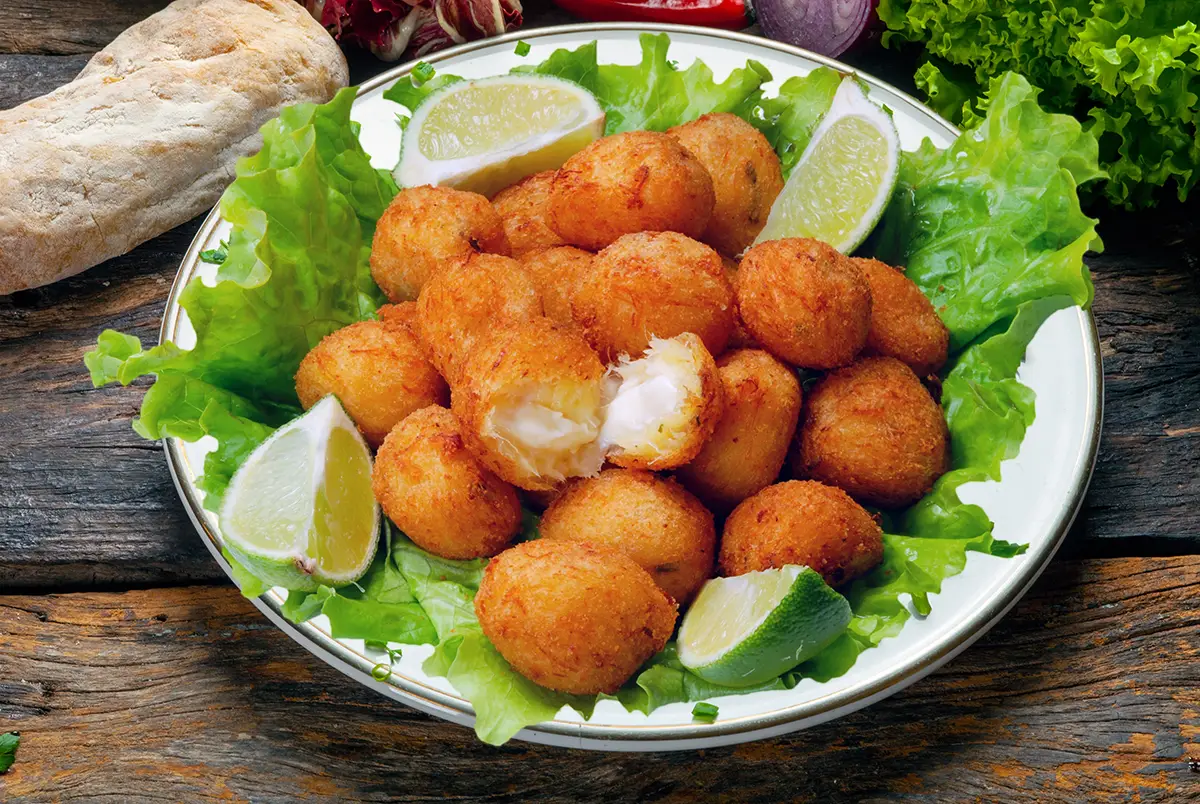
This Portuguese tapa takes inspiration from one of the fishes most beloved by the Portuguese – cod. Crafted from a mix of mashed potatoes, cod, onion, and salsa, pastéis de bacalhau are a crispy bite before the creamy, smooth contents spills onto your lips. Definitely a petisco on the saltier side, the use of onion and salsa balance the taste out. Pastéis de Bacalhau are a treat easily found in most Portuguese cafés all around the country and serve as the perfect midday snack.
Chouriço Assado
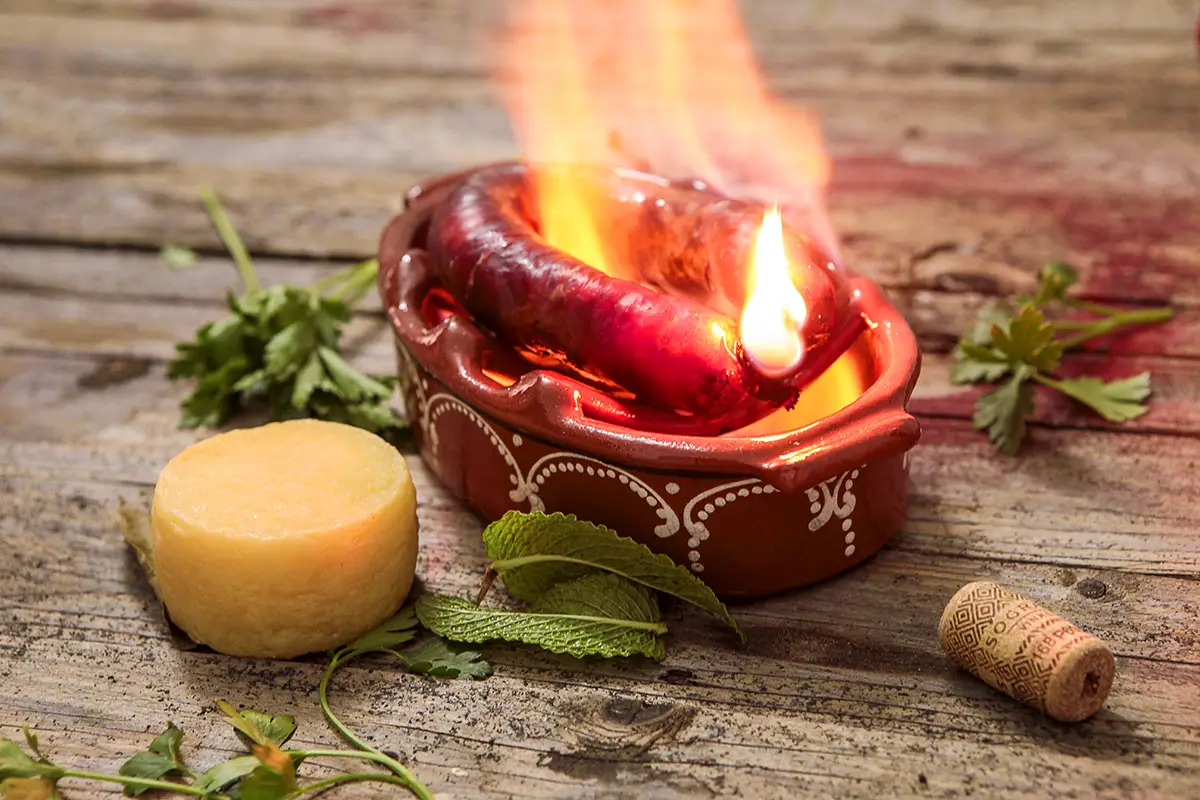
There are multiple approaches to this Portuguese petisco, including eating this smoked, fermented, pork sausage as it is. Portuguese chouriço is born from a smoking process which draws from multiple ingredients, including paprika, garlic and a variety of spices, creating a unique taste bound to fill the mouth with an explosion of diverse, tasty flavours. However, it’s far more enjoyable when the Chouriço is Assado. Best enjoyed with warm bread and a glass of wine, chouriço is roasted over a raw fire, becoming assado in the process, leaving the meat with a sizzling, crunchy crust, and a delicious taste.
Bifanas
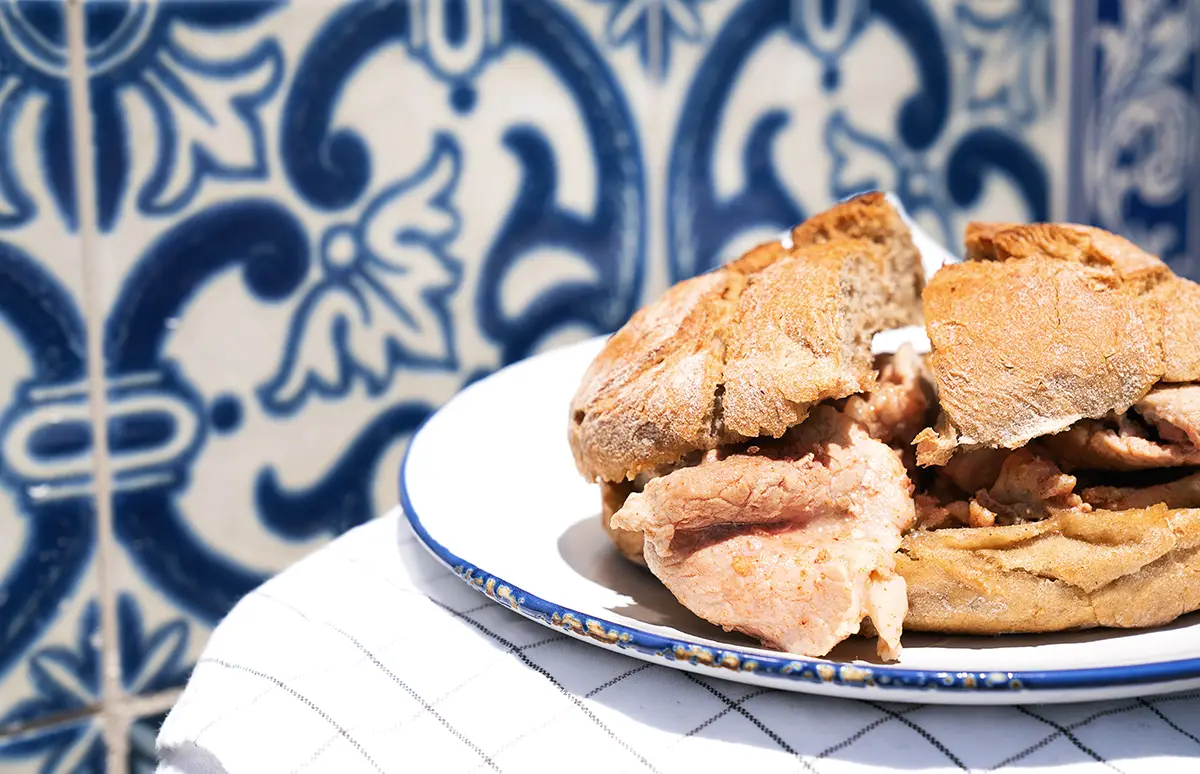
There’s nothing quite like a bifana, the most essential Portuguese tapa that can be so filling, it can easily double as a quick lunch or dinner solution when nothing else is available, especially when accompanied by beer and a side of crisps or fries. Perfect on the go, or when sitting down for a quick meal, a bifana is nothing less, nothing more than savoury, pork slices on typical Portuguese bread. However, it’s not just putting meat on a bun and calling it a day. There’s an entire art to cooking the meat to perfection, which includes marinating and simmering the meat in a sauce with white wine, garlic and paprika. No bifana is truly ever complete without a layer of mustard coated on the bun and the meat, though alternatively it can also be enjoyed with the Portuguese piri-piri sauce.
Salada de Polvo
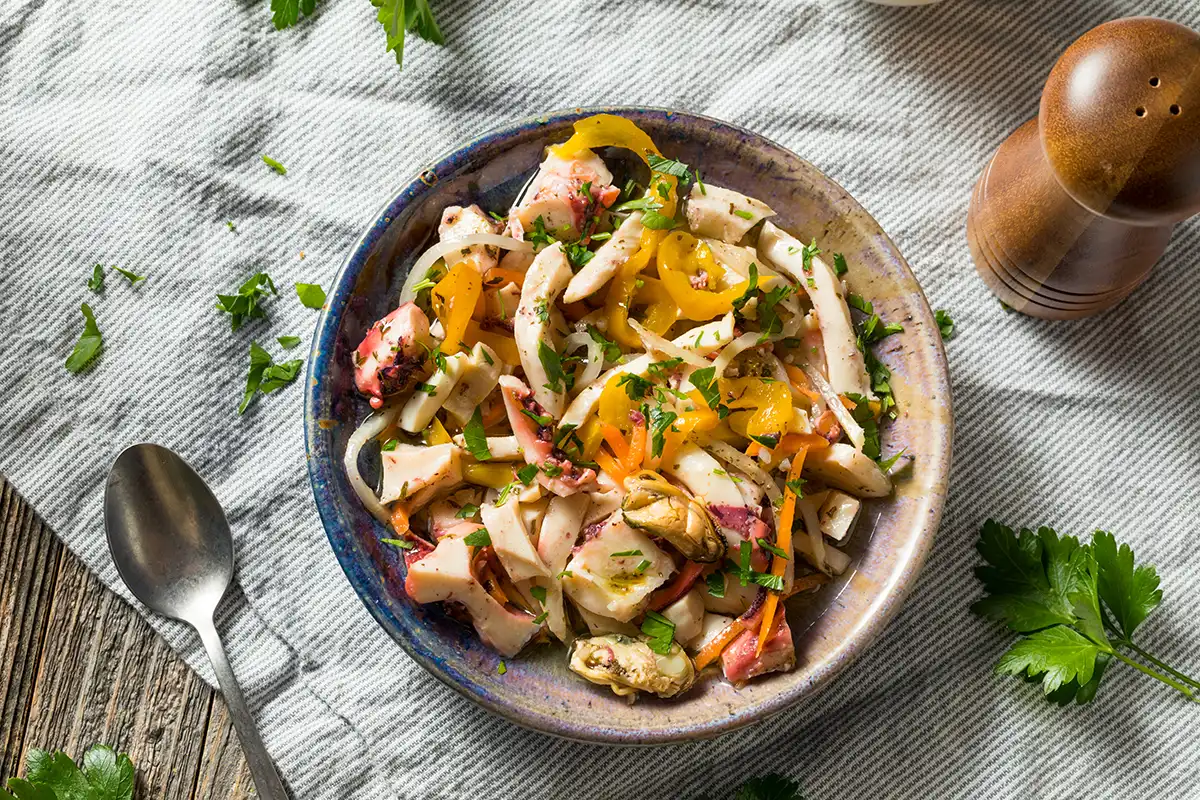
Portuguese cuisine is hardly all about meat. The Portuguese love seafood as sure as the coastline is bathed by the Atlantic Ocean. To simply put it, salada de polvo literally means octopus salad. However, there are several factors distinguishing this Portuguese tapa from others. First is the size – served in a smaller bowl, which makes sense as a petisco. The second is the way it is prepared – with the octopus being thinly sliced in tender pieces and perfectly mixed with chopped onions, bell peppers and fresh parsley – and sometimes potatoes, which enhances the petisco’s heartiness. The salad, dressed with olive oil, vinegar, garlic and just a pinch of salt and pepper fully bring the savoury flavours out – perfect to be had during the summer, bringing a much-needed freshness to the day.
Tábuas de Queijos e Enchidos
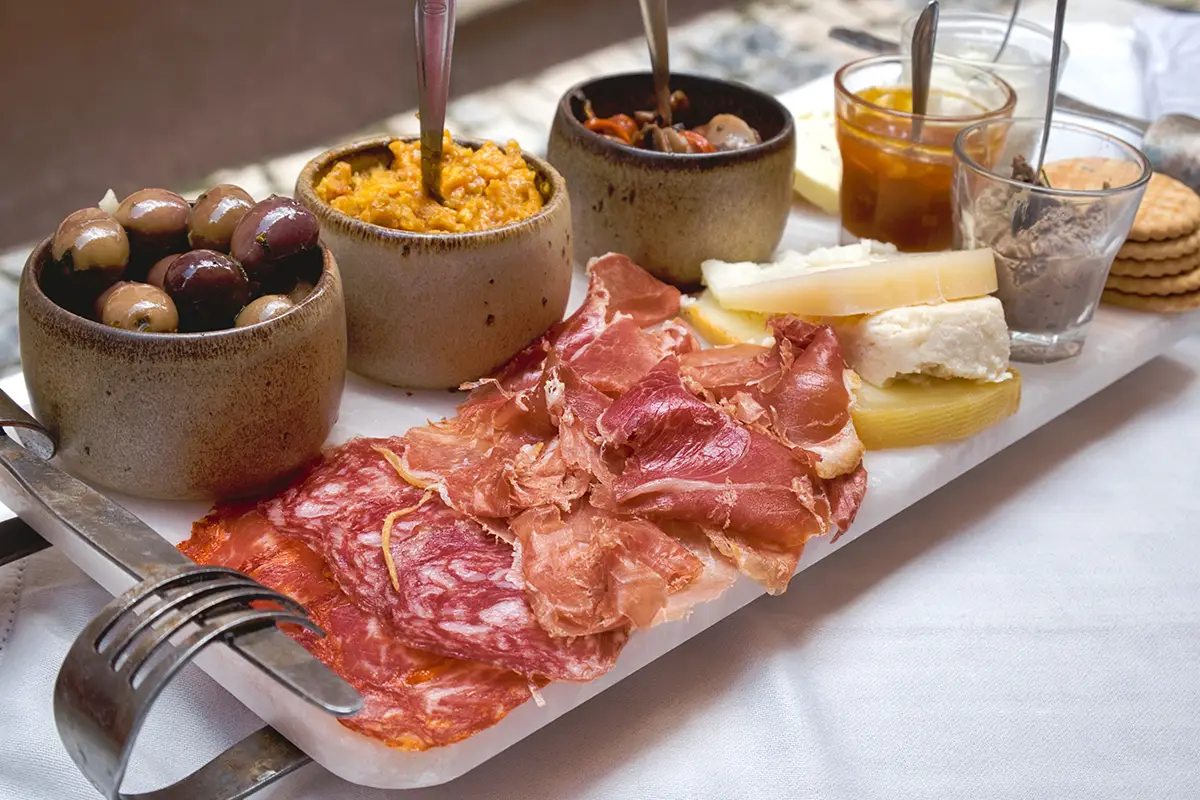
This one doesn’t require much preparation, though knowledge on the most famous cheeses the Portuguese prefer is essential to organise a well-executed charcuterie and cheese board. The perfect afternoon Portuguese tapa will leave you full and craving for more of the perfectly assembled cheeses, from iconic Portuguese locations such as Serra da Estrela and Serpa, and cured meats, including chouriço, presunto, and salpicão, among others. You may have noticed it by now, but the Portuguese do enjoy their petiscos with a beer or glass of wine, and when feasting on this delicacy, a robust red wine or a soft white wine are the best recommendations. Besides the cheeses and hams, the board is typically accompanied by crusty bread, olives, and sometimes nuts or even grapes, adding in another layer of flavours and textures for the mouth to enjoy.
Gambas à Guilho
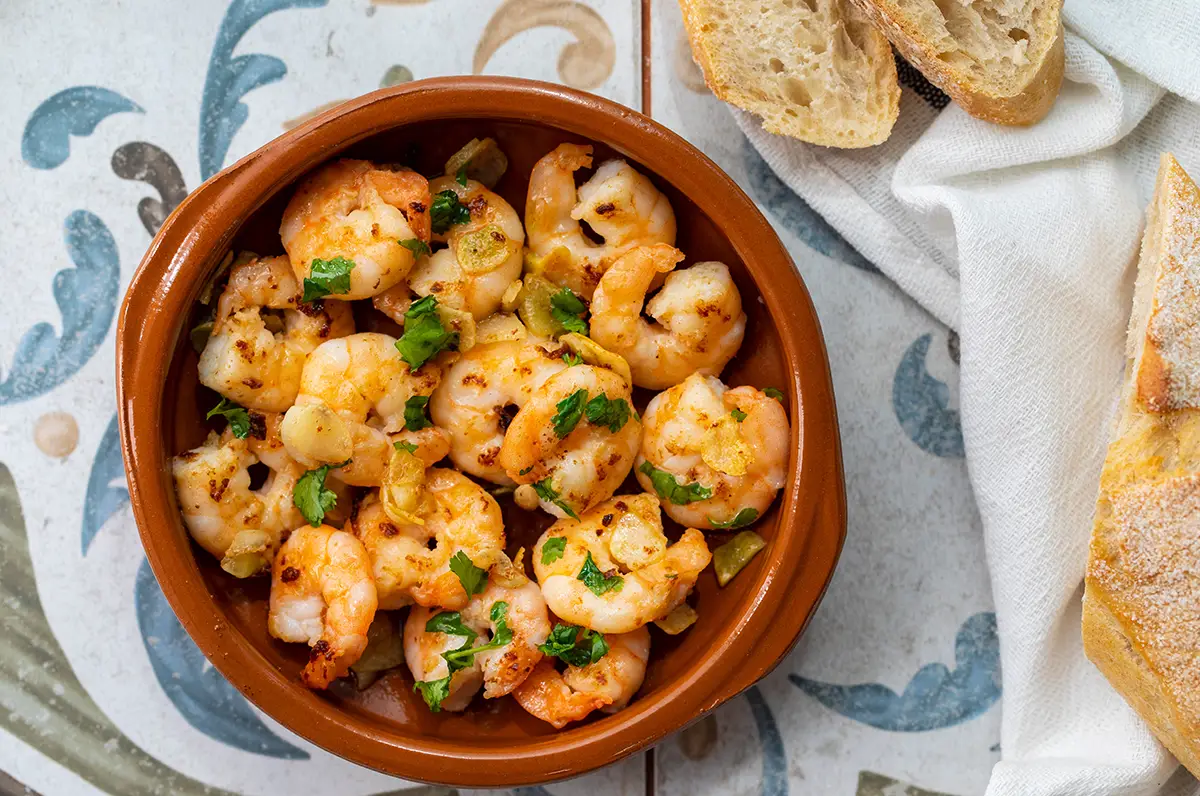
Also called “Camarões à Guilho”, it is perhaps, the one closest to a Spanish tapa, and this petisco represents a true hallmark of Iberian cuisine and culture. Using only the freshest, most succulent prawns (or shrimp if you prefer), seasoned with a pinch of salt, lemon juice, garlic, butter – and some chili – this Portuguese petisco is cooked at a high temperature. A bit of whiskey adds in a final, refined taste to the whole dish, resulting in an unlikely, yet flavourful petisco which complements its spiciness, tanginess and sweetness perfectly together.
Amêijoas à Bulhão Pato
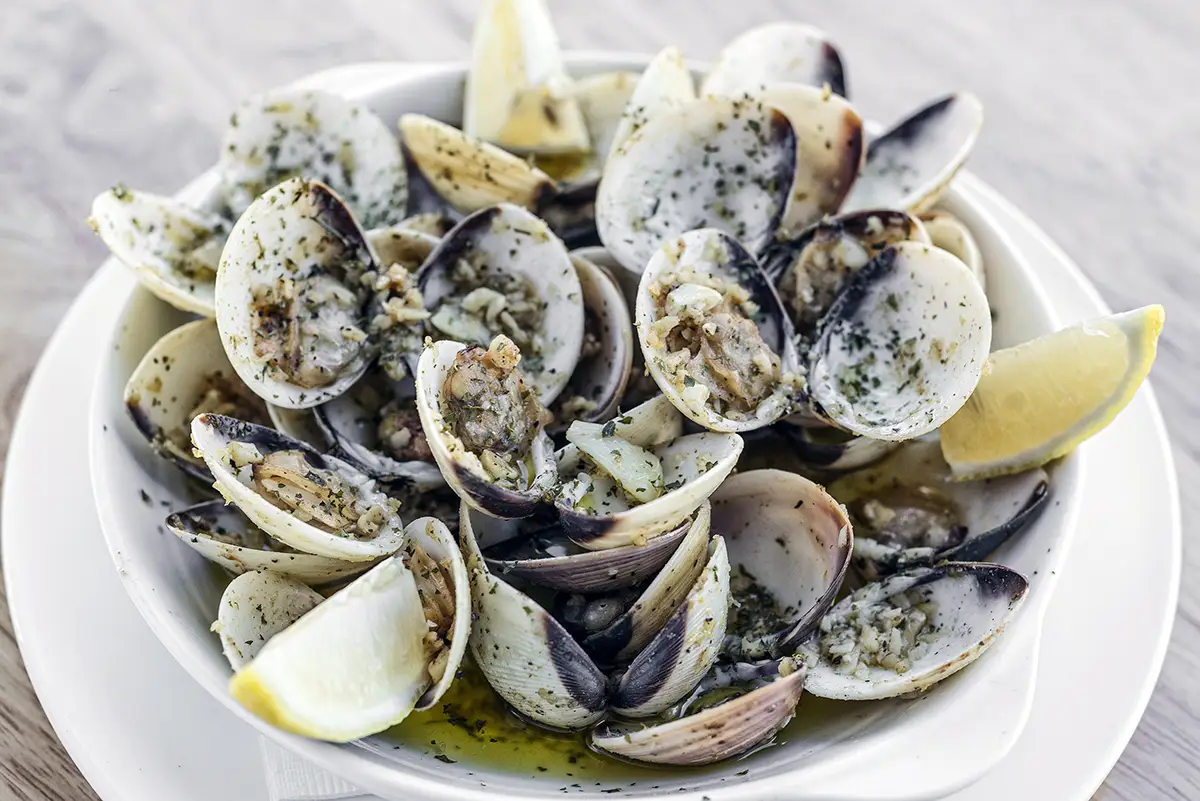
Another petisco doubling down as a perfectly serviceable meal, Amêijoas à Bulhão Pato is another go-to Portuguese tapa during the summer. Though the clams are the main part of the dish, its flavour is completely enhanced by the unique sauce, made from a mix of cilantro, garlic, lemon juice, salt, pepper and olive oil, which bring just the slightest of acidic touches, resulting in an intriguing, yet explosive taste which will let you know, right away, why so many people love Portuguese seafood.
Rissóis
A widely available Portuguese treat, rissóis can easily be found at every other Portuguese café. This quick snack is typically filled with either a creamy prawn or minced meat, which have been cooked to perfect inside a crispy, golden breadcrumb coating. The prawn or meat within is seasoned with a mix of spices, garlic and onion, fully bringing the flavour of the inside contents to their fullest taste. Whether eaten hot or cold, it not only sates the stomach for the time being, but also offers an introduction to Portuguese cuisine.

Peixinhos da Horta
Literally translated as “small fishes from the garden”, it is a completely vegetarian dish, since no animal meat is used to make up this Portuguese petisco. It isn’t something you’ll typically find in most cafés, since it requires a bit more preparation, but it is by no means any less appetising. Essentially, these "small fishes” are nothing less, nothing more than baked green beans enveloped in batter, which is seasoned with salt and garlic. The beans then fried to a delicious, crispy golden brown, and the crunchiness of the outer layer dissolves into the tender beans inside, leaving your mouth watering for more.
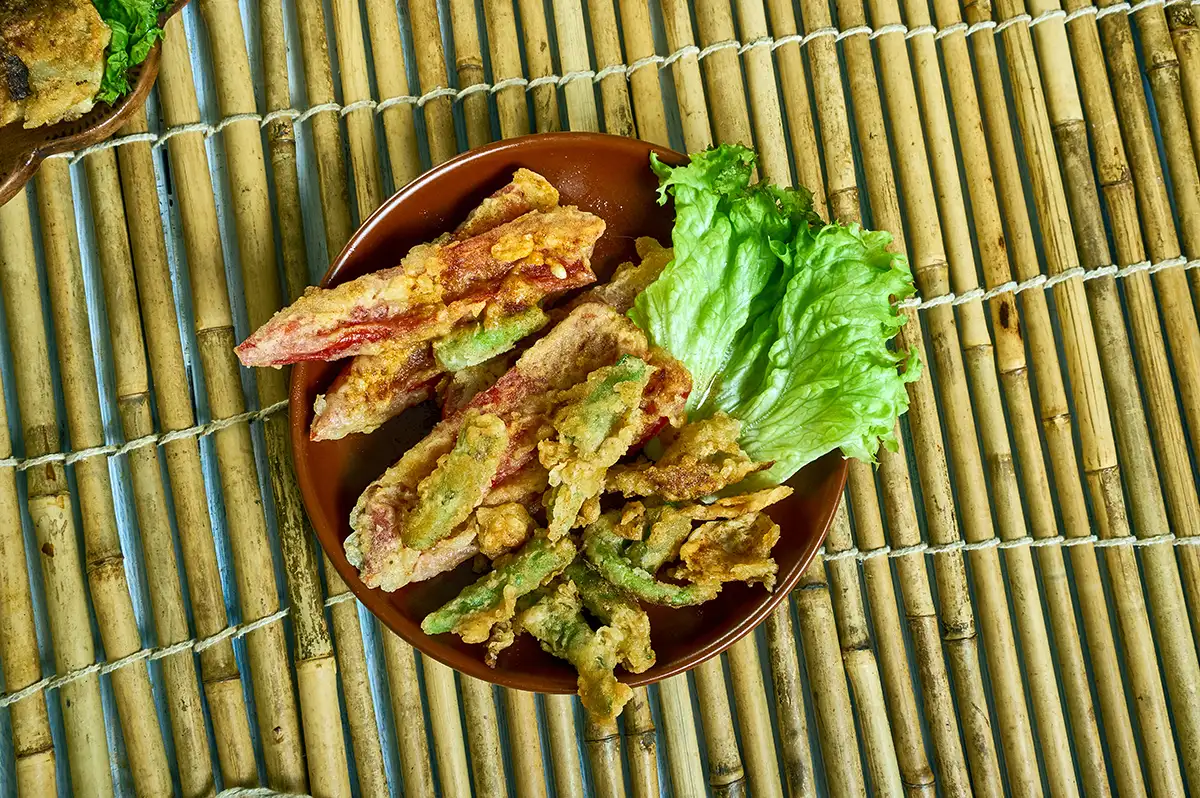
Still Curious about Portugal? It has More to Offer than Just its Cuisine!
We do admit it: Portuguese cuisine is enough reason to visit Portugal, but the country has much more on the table to offer than just its immense variety of dishes, meals and petiscos. Between truly awe-inspiring sights, a vast wealth of monuments and museums, each telling Portugal’s story, long stretches of sunny beaches, Portugal truly has something for everyone to see, eat, or enjoy. It’s not unheard of countless people coming to visit Portugal for the first time, spend a few days exploring the country’s many cities, towns and villages, and simply fall in love with Portugal – to the point they have decided to move to Portugal.
Read more:
Portuguese Sweets and Pastries
25 Interesting Facts about Portugal
Most Beautiful Places in Portugal
If you’re interested in finding more about Portugal, learn its ins and outs, or you’re already decided on moving here, reach out to us at Portugal Homes! We are experts on everything there is to know about Portugal and moving here, including all the legal bureaucracies and tax implications.







